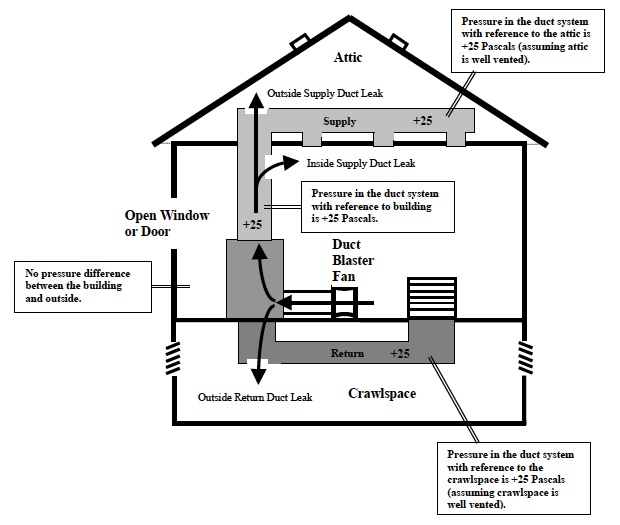In the previous page on the basic duct leakage testing procedure, we said that you pressurize the duct system and measure the airflow through the fan. To find the total duct leakage, that’s basically all you do. The only other thing you need to make sure you do is keep the spaces where the ducts are at the same pressure as the outdoors, as much as you can anyway.

The diagram above (taken from the Energy Conservatory‘s Duct Blaster Manual) shows the setup for the total leakage test. The Duct Blaster fan blows air into the duct system. Here it’s shown attached at the air handler, though most often it’s attached to a return vent. The crawl space and attic are both vented and thus close to the same pressure as outdoors. The house is shown having an open door or window to equalize pressures with the outdoors.
When the Duct Blaster is turned on and the sytem brought up to 25 Pascals of pressure, air will leak out wherever there’s a hole in the duct system. Some of that leakage, as we said before, is benign (to the conditioned space), and some is malignant (to the unconditioned spaces).
To find out how to eliminate the leakage to the conditioned spaces and measure only the leakage that the homeowners pay for, read on. (Or go back to the main duct leakage page.)
Do You Have an IAQ Plan for Thanksgiving?
So you've got a bunch of people showing up this week to spend a day or two or three with…
Allison Bailes is a wonderful teacher who has clearly spent a lot of time developing his teaching methods. He is very knowledgeable on the subject and is friendly and personable.

